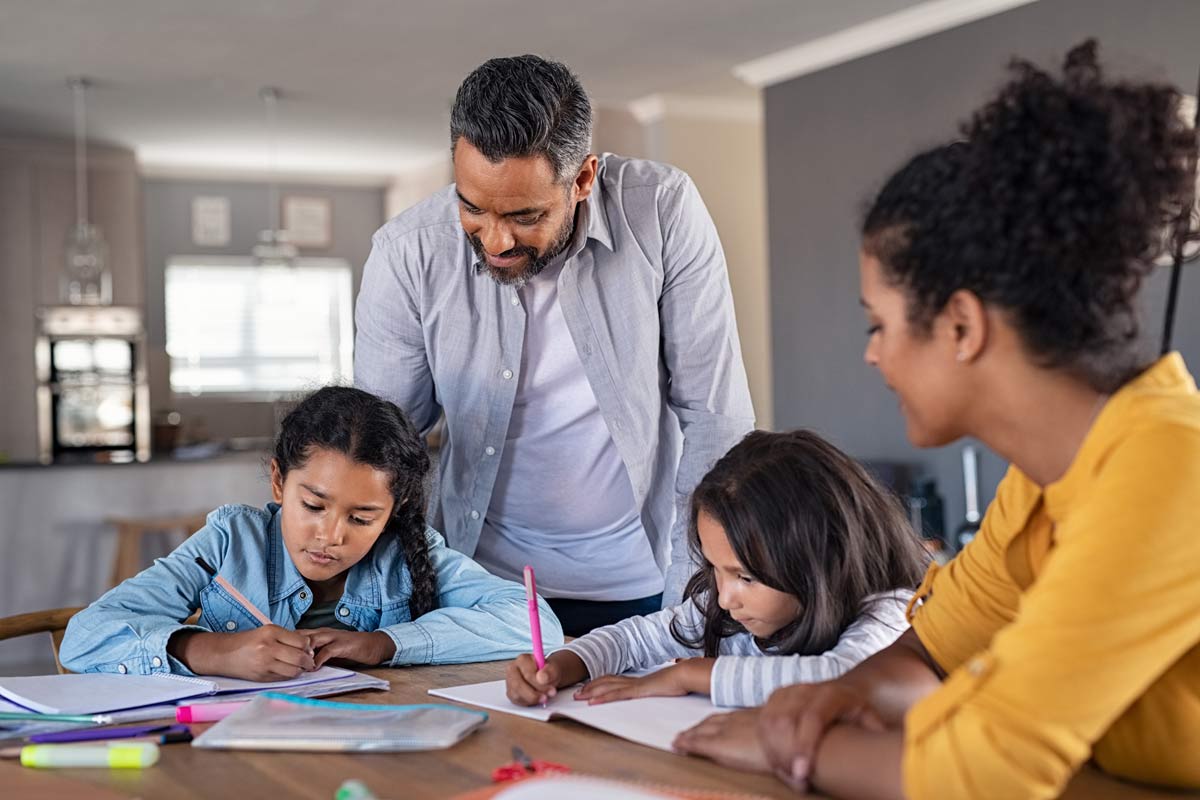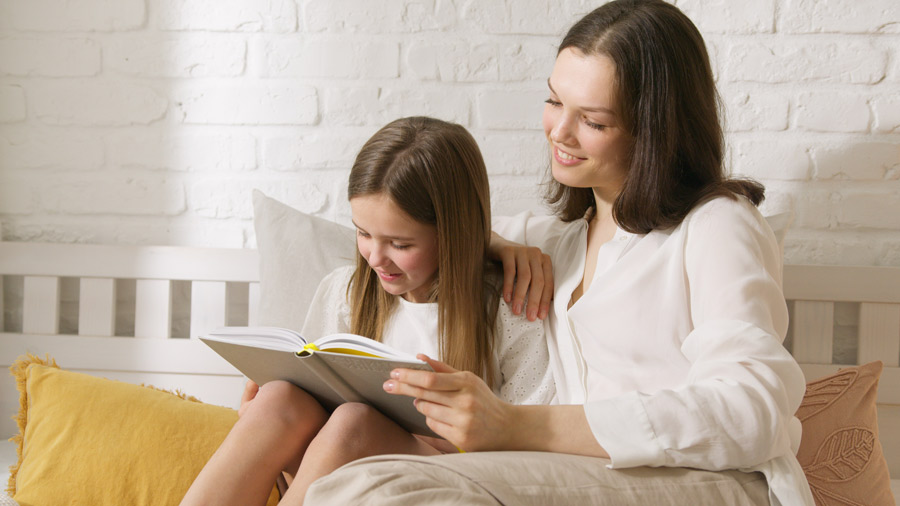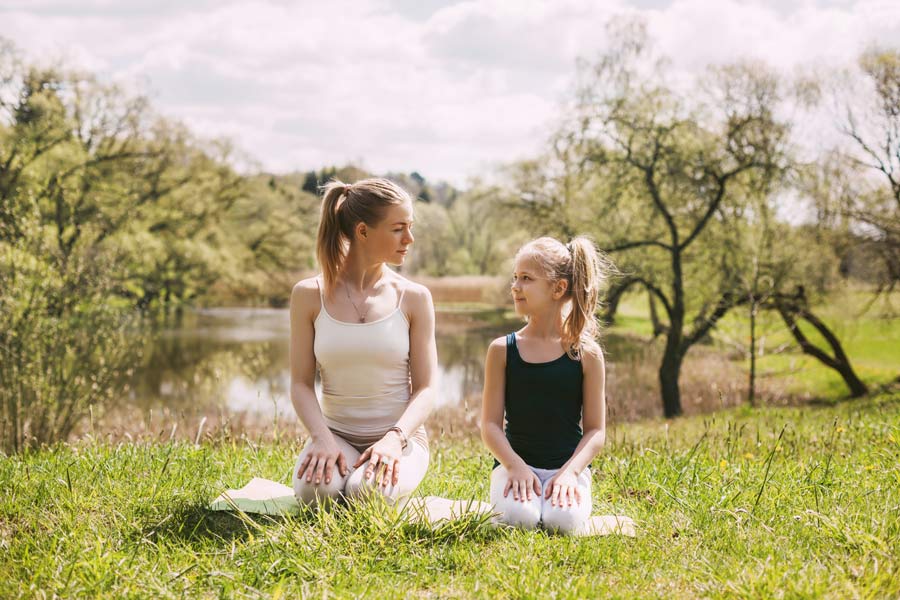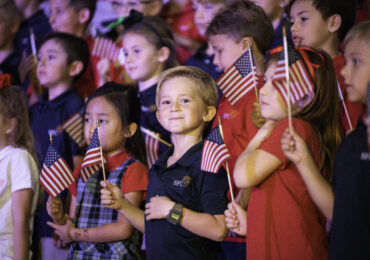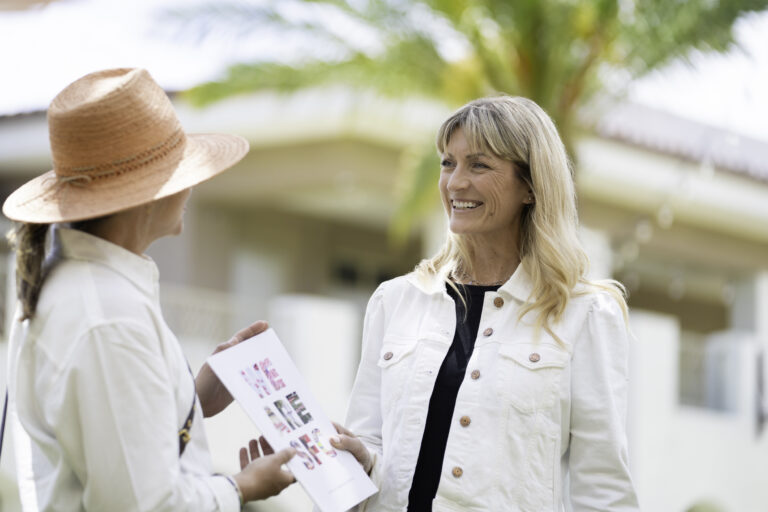It’s no secret that anxiety is at an all-time high in our culture, and people can experience it at any age. Unfortunately, this also means that the incidence of child anxiety is on the rise.
As a parent, watching your child go through emotional difficulties is one of the most taxing experiences you can have. You want to protect your child from pain, but in the case of anxiety, the cause of your child’s stress is an invisible, internal enemy. As a result, you may feel helpless or unsure of how you can help.
At Santa Fe Christian, we’re passionate about helping parents navigate the mental and emotional struggles that tend to impact children and adolescents. On our podcast, Mike Siciliano, SFC’s High School Dean of Students, sat down with Sissy Goff and David Thomas of Daystar Counseling Ministries to discuss increased anxiety levels in children and how parents can help.
In this article, we’ll highlight the key takeaways from that discussion – why is anxiety so prevalent in youth today, and how can parents help their children cope with it?
What is Anxiety?
Children and adults may experience anxiety to varying degrees – but what exactly is anxiety? Sissy Goff says that in all her research, she’s come to identify anxiety in individuals as “an overestimation of the problem and an underestimation of themselves.”
She also explains, “There’s a continuum from worry to anxiety. All kids pass through different stages of fear. All kids worry to some degree.”
So, how can we tell the difference between normal levels of worry and true anxiety?
Goff says anxiety is characterized by getting “stuck in a loop. Anxiety does not exist in the present moment. It’s always in the past or the future.” While we all experience intrusive thoughts, anxiety occurs when those thoughts remove us from the present moment and drag us into a past- or future-focused loop.
What Does Anxiety Look Like in a Child?
Identifying anxiety in a child requires proactivity and awareness. Children don’t always present anxiety in the same ways, and boys and girls tend to feel anxious about different things.
Mike Siciliano says, “I rarely have a male student come in and say, ‘I’m just so overwhelmed by all these tests that I have.’” He notices emotions come to the surface in boys within athletic contexts more often than academic ones.
This, of course, isn’t always the case; David Thomas remarks that he works with many boys who do have a lot of anxiety about school and test scores. But, on the academic front, Goff says she’s never seen as many girls as she does now who are experiencing anxiety about their grades.
She also notes that these days, when kids are under pressure, they “don’t say ‘I’m stressed’ anymore. They go straight to anxious.” This may have to do with the fact that mental health is being talked about more openly in the mainstream than ever before.
Even so, Goff says, “the reality is the numbers have gone up too, which is really tragic for the kids who are struggling with depression and anxiety, because now the words are being used up, and no one hears when they’re really struggling with it.”
For this reason, it’s incredibly important for parents to talk to their children when they say they’re anxious and find out more information about what they’re experiencing.
Learn more: Listen to the full conversation with Sissy and David on our podcast.
What Caused the Increase in Childhood Anxiety?
About nine years ago, one in eight kids experienced anxiety. Three years ago, that number jumped to one in four kids. Now, the statistics say one in three adolescents have anxiety, with girls being twice as likely to experience it.
This begs the question, what caused the sharp increase? By understanding the causes of increased childhood anxiety, we can work toward more effective solutions and methods of intervention.
Parenting Strategies
When it comes to childhood anxiety, parents can play a significant role in helping their children cope.
“Research says that the two most common parenting strategies when a child gets anxious are escaping and avoidance,” says Goff. “Of course as a parent, if your child is in distress, what do you do but help step in and pull them out?”
When parents do that, though, they communicate to their children that the problem is too big for them on their own and that they’re not capable of handling it. Goff says that this can decrease the likelihood that children will share their struggles with their parents.
Overscheduling and Unprecedented Pressure From Parents and Society
Another cause of increased child anxiety is the unprecedented level of societal and familial pressure children experience today.
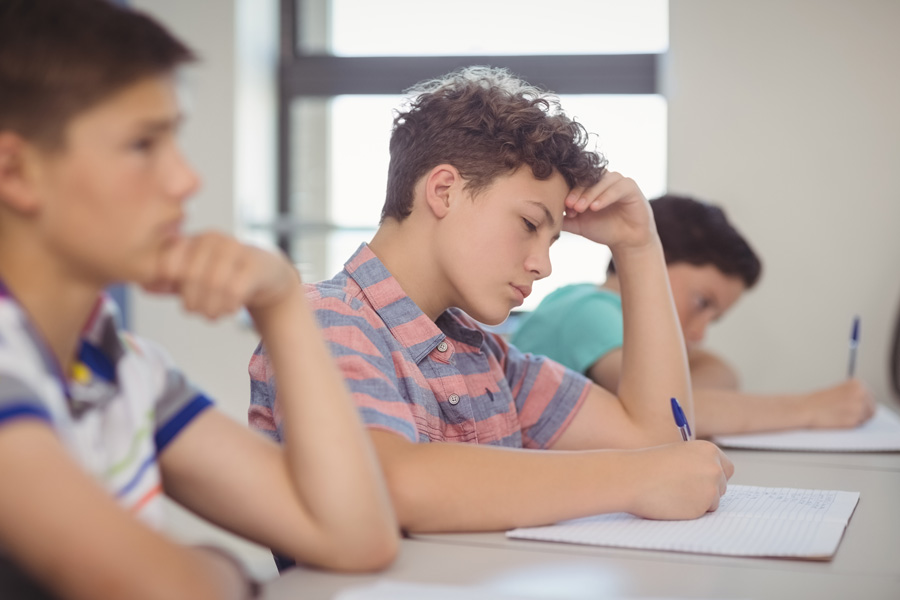
Now, that pressure has mounted to a new level. He says, “We sit with kids all the time who are terrified.” They’re experiencing thoughts such as, “No college may take me. It’s so competitive. My scores aren’t high enough.”
Parents may unintentionally add to this societal pressure by overscheduling their children. Well-meaning parents who want their children to succeed experience the pressure to get them involved in more extracurriculars than they can handle. When children juggle too many responsibilities and feel pressured to excel in all of them, anxiety is a natural consequence.
Perfectionism and Comparison
On top of the pressure to succeed in all areas of their life, children are also now experiencing the pressure to appear as if they’re succeeding.
Thanks largely to social media, children, and teens have more opportunities to compare their lives to their friends’ lives – and the lives of unknown people on the internet. This can cause them to spend an inordinate amount of time thinking about how they’re being perceived by others. They may question whether they live up to the standard or ideal that they see promoted on social media platforms.
For girls, in particular, perfectionism and comparison are big drivers of anxiety. Goff says girls today “have this drive to pursue excellence in all things, whether it’s athletic, artistic, or academic – all these areas. And be kind, and a good friend, and look amazing on social media while doing it.”
Difficulty Self-Regulating Emotions
Since children are still developing emotional coping skills, dealing with anxiety tends to be more difficult for them than for adults.
According to Goff, kids are having more difficulty self-regulating their emotions than ever before. “If we’re going to think about emotions on a one-to-ten scale, we are seeing more kids live at a ten than ever before – anger, sadness, anxiety, disappointment – and they don’t have a sense of how to regulate.”
She says that adults are typically able to realize most of life happens between a three and a seven on that scale, but to children and adolescents, everything feels like a ten. “Every disappointment carries this intense weight.”
Listen: Subscribe to the Eagle Perspective Podcast wherever you listen to podcasts, or check out all the episodes here.
6 Ways Parents Can Help Their Children with Anxiety
So, now that you have a better understanding of why children are experiencing anxiety at record rates, let’s talk about what can you do as a parent to help. Add these strategies to your toolkit, and use them to help your child navigate anxious feelings.
1. Redefine Success, Happiness, and Well-Being
One powerful way to combat the mounting societal pressure on children is to offer a new perspective on what they should strive for.
While society typically defines success in terms of prestige, status, and material wealth, you can encourage your children to question those definitions. Thomas says, “When we interview people who report satisfaction — relational satisfaction, vocational satisfaction — those tend to be individuals who embody the skills of well-being more than it is to make an insane amount of money.”
Reframing what it means to be happy and successful often starts with you as a parent. Siciliano notes that your child’s happiness may not look the same as your vision for happiness. “Sometimes we expect them to do it the way we did it, and it might look different for them.”
Encourage your children to get creative about defining success, happiness, and well-being. As Goff notes, this is about helping children see that there are more options than what society offers. It’s an opportunity “for us to go back to experiencing God and who God has made your kids to be.”
2. De-Stigmatize and Be Proactive About Mental Health
Another way to help your children with anxiety is to provide space for them to speak openly about their mental health. It may also be a good idea to see a counselor proactively before anxiety becomes an issue for your child.
Thomas says, “Sometimes we go to the doctor when we’re sick and we have a cold or a virus, and sometimes we go when we’re well just to check in.”
In some cases, children may be resistant to seeing a mental health professional for fear that something is “wrong” with them. Goff describes one such encounter a mother had with her child. Her response to her child’s resistance was to frame it as building her a team:
“We have a great team academically for you at your school,” she told her child. “We have a great physician in place with your pediatrician who’s helping us with your body and your health. Of course, we would have people on your team for your mental health. We’re just building your team.”
3. Help Them Understand What’s Going on in Their Bodies
Dealing with anxiety is difficult for children, and it’s often made more difficult by their lack of understanding about what’s happening to them. In her practice, Goff breaks down anxiety into help for the body, help for the heart, and help for the brain.
“We start with help for the body to first just educate ourselves and kids on what’s happening in our bodies when any of us is emotionally charged,” Thomas says. “What happens is that our heart rate increases, our pupils dilate so that we can see danger farther away, and blood flow moves to the larger muscles so we’re tensed and ready to fight. Even our stomachs jump on board with less digestive activity so we can shore up more energy.” As Thomas points out, “That’s a great biological state if you’re going to encounter a rattlesnake or a grizzly bear. It’s not a great state if you’re about to take the SAT or make a shot from the free-throw line.”
When children know how their bodies respond to anxiety, they’re better able to notice when it’s happening and self-regulate.
4. Help Reframe Failure
Because anxiety is often connected with a fear of failure, one way to help mitigate your children’s anxiety is by demonstrating that failure is normal.
Thomas encourages parents to make talk about failure a regular part of the conversation as a family, so kids can see evidence that the grown-ups they trust most in the world experience it, too. Children, especially boys, tend to interpret failure as a sign that they’re bad.
But, if you can be more open about your failures, your children will learn not to be ashamed when they fail. “I don’t think boys can hear enough adult men speak to the dailiness of disappointment or the experience of loss in a way that is part of our human experience,” says Thomas.
Another way Goff encourages families to reframe failure is to participate in activities together that no one in the family does well. “We don’t laugh at ourselves very much,” she says, “and I think kids need to see us do that.”
5. Teach Practical Techniques for Managing Anxiety
When anxiety strikes, there are some practical steps children can learn to cope and calm down.
Breathing Techniques
The first technique Thomas and Goff teach parents and children to reset the brain and body is called square breathing. This technique teaches kids how to breathe at a rhythm and pace that calms the body when it’s amped up.
Thomas explains, “You breathe in on one line, pause for four seconds, breathe out on the second line, pause again, breathe in on the third line, breathe out on the fourth line. That square is just a great concrete tool that allows kids to get the accurate rhythm and pace.”
What’s great about this breathing technique is that kids can do it anywhere. “We’ll have them draw it on their legs,” Thomas says. “We’ll have kids come back and tell us, ‘I was doing that under my desk right before I took a timed test, and it was calming me down.’ I had a little boy say, ‘I did it at the free-throw line right before the referee threw me the ball.’”
And it’s quick! Research tells us that just 20 seconds of deep breathing will reset the amygdala and start calming the body down.
Goff recommends that parents use this technique with their children preventatively, not just when they’re experiencing anxiety. “The more often the amygdala is triggered, the more likely it is to trigger,” she says. “It enlarges in anxious kids and develops a hair-trigger response.”
So, to help prevent this response from becoming instinctive, practice square breathing with your child regularly, whether on your daily drive to school or before bed.
Grounding Techniques and Games
Another calming method you can share with your child is the use of grounding techniques. This can be any short activity that pulls your child out of their anxious loop and back into the present moment.
One of Goff’s and Thomas’s favorite grounding games is called 5, 4, 3, 2, 1. It involves using sensory data (such as sight, smell, hearing, touch, and taste) to help children focus back on the present.
Goff and Thomas also use the color game. This game involves asking the child to choose a color, then asking him or her to say everything he or she sees in the room that is that color. “When we’re doing this kind of cognitive work, there’s no room left over for worry to be occupying the space, because we’re engaging the mind in amazing ways.”
Just like square breathing, this method can also be used preventatively.
6. Integrate Scripture Meditation
Finally, scripture meditation can be an incredibly powerful tool to help both you and your child cope with anxiety.
Thomas and Goff encourage kids who are experiencing worry to memorize 2 Timothy 1:7 – “God did not give me a spirit of fear but a power of love and a sound mind.”
Scriptural meditation has a dual benefit for kids. “They’re speaking the scripture out loud to themselves, combating those worried or looping thoughts,” Thomas says. Also, “they’re hiding God’s word in their hearts.”
As Goff points out, “Grounding in truth, I think, takes all of us back to a place where we can get to more hope and more freedom.”
SFC is committed to bringing in mental health professionals to partner with parents in raising well-rounded children. Part of how we’re accomplishing this is by inviting experts to speak with parents in our parent engagement series, so parents can be equipped with critical tools to navigate their child’s experiences.
